Forget garlic naan and enjoy Bhature, or puffy deep fried Indian bread! These no-yeast, no-bake breads are impressive when perfectly fluffy and soft. Bhatura are especially delicious when served with Chole for a comforting brunch or dinner at home. And then deflating it before digging? So fun for kids and adults alike!

It's so fluffy I'm gonna die!!! I actually love bhature because 1. They're delicious, duh. And 2. I love giving them a poke and watching them deflate!
In my home, Chole Bhature is a delicacy. Even though making the meal is relatively easy, between resting the dough, frying the bhature, and soaking the chickpeas - it takes some planning.
We have it on special occasions or when someone is in a good mood. My mom makes it absurdly well, to the point that she's famous for it amongst our family and friends. It's so exciting to learn her recipe and be able to pass it along for others to try.
This is a tried and true recipe that has been the exact same over several decades. You're gonna love it!
Jump to:
What is a Bhatura
Bhature (the plural of bhatura) are puffed leavened bread that are deep fried in oil. It's typically served with Chole, a chickpeas curry, in India as a pairing called Chole Bhature which originated in Delhi. It's a classic comfort food dish and so hearty which makes it one of the most popular dishes in North India.
Ingredients - Notes and Substitutions
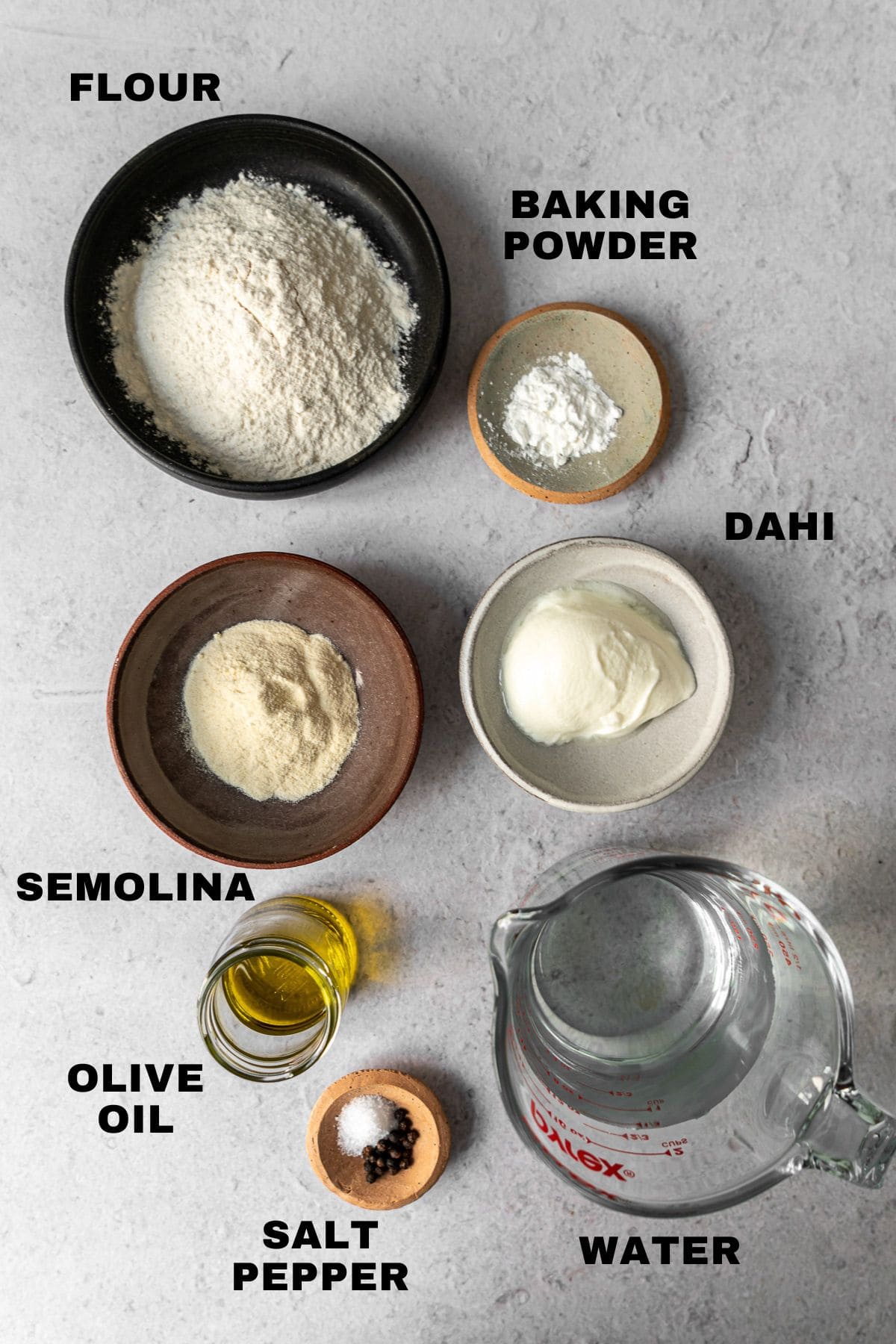
- Flours - Use all-purpose flour (maida) and semolina to get the perfect texture for bhatura. You can also use a bit of wheat flour instead of the all-purpose flour.
- Leavening - To get fluffy, light bhature, use baking powder for a leavening. Due to the yogurt, you can also use baking soda.
- Yogurt - Traditionally, dahi is used with the dough because it adds a bit of tanginess and helps activate the leavening for the puffy, soft-on-the-inside bread. Dahi is an Indian curd that's homemade on a weekly basis in most Indian homes. You can purchase it in-store or use plain whole Greek yogurt.
- Oils - Two oils are used for bhatura, one for the dough and one for frying. Olive oil enhances the flavor and texture of the bhature. A neutral oil with a high smoke point is necessary for frying.
How to Make and Fry Bhature
Bhatura dough is made with flour (maida), leavening, and oil. This bhature recipe also uses semolina and plain yogurt. You'll need a rolling pin, or a bottle of wine to roll out the dough.
1. Make the dough
The dough is super simple to bring together! In a large bowl, toss in all the dry ingredients first and give it a whisk. Here's where you'll start using your hands to get a good feel of the dough.
Make a well in the middle of the dry ingredients and add the yogurt (preferably dahi) and oil. Use your hands to mix the wet ingredients into the dough until you get a shaggy dough, as seen below.

Slowly pour in the lukewarm water as you knead, only adding as much as you need to hydrate the dough. You'll only need to knead it for 5-7 minutes until it comes together into a smooth ball.
Lightly oil the bowl. Cover the dough and let it rest for about an hour at room temperature.
2. Roll out the bhature
Begin by preheating the oil while you roll out the the dough. Pour the oil into a pot that has plenty of space for frying. It's ready when the oil starts to shimmer.
After an hour, uncover the dough and transfer it to a lightly oiled surface. Knead the dough for two minutes. Roll the dough out into a log, as seen below.
Note: The dough isn't smooth in the photo because my mom added a bit of wheat flour for health.
Divide the dough into about 8 equal-sized pieces.
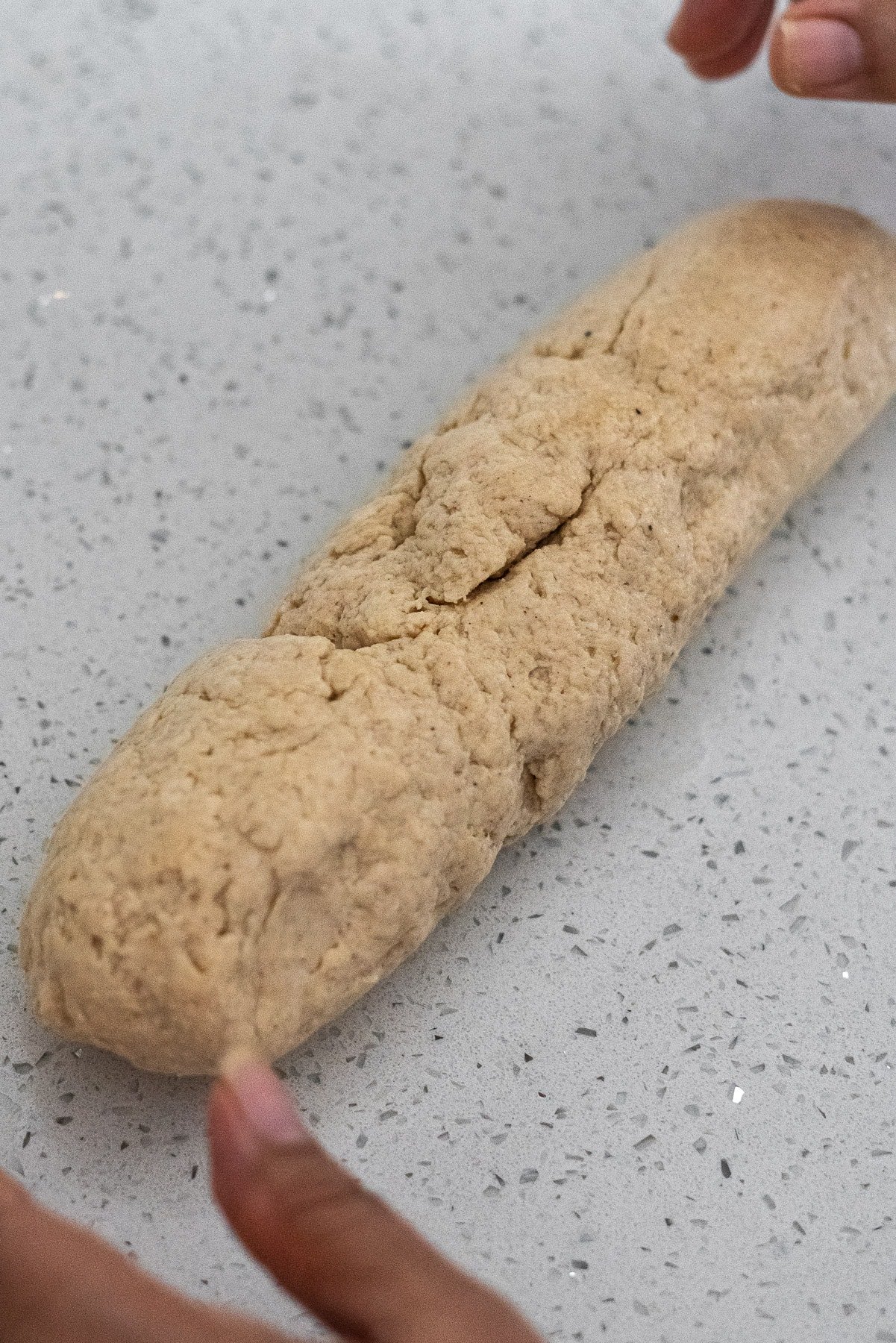
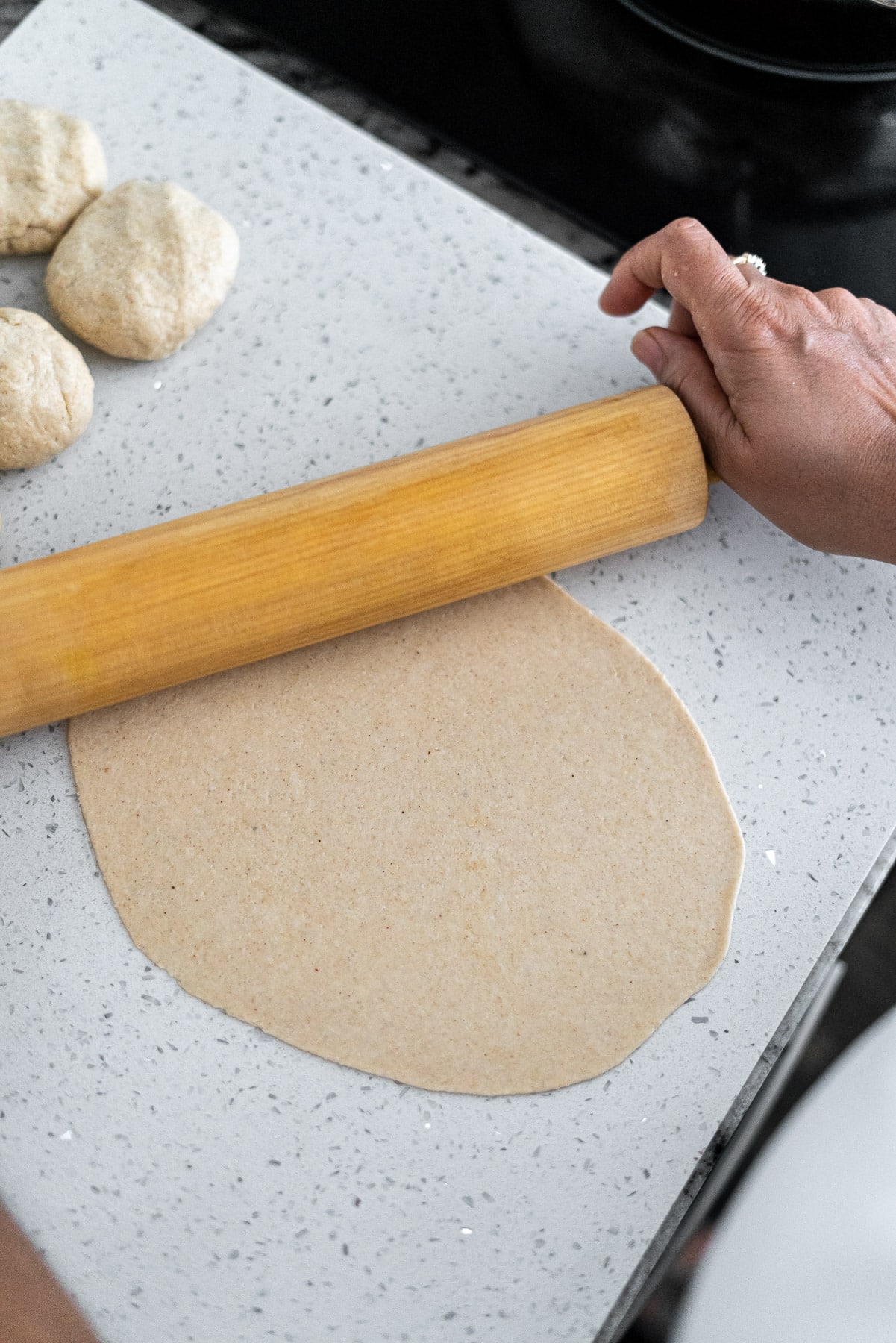
Start out with rolling the piece of dough in between your hands to form a ball. Then, toss the dough ball on a surface and press it down with your fingers to flatten it out.
Roll it back and forth a few times with a rolling pin, and then rotates it 90 degrees every few rolls to create the perfect circle. Towards the end, roll one last side out and into an oval shape. You're looking to get it as thin as possible before the dough starts to rip.
Pro tip: If the dough is tough to roll out and keeps springing back, let it rest for another half hour to allow it to relax. I suggest rolling out one bhatura and placing it in the hot oil before continuing to roll out the rest. Test your multitasking skills!!! You can also drape the ready rolled bhature out on the edges of the bowl when they're ready for frying.
3. Fry the bhature.
This is probably the hardest part! Getting the perfect puffy bhatura that's the right texture is not always easy. The first one is usually a dud, but an edible dud.
Pro tip: You'll want to make sure the oil is evenly heated so if you think the oil is ready for frying, wait just a couple of more minutes for it to be really ready. The oil will start to shimmer when it's hot.
In the meantime, continue rolling out the bhature and line a plate with a paper towel.

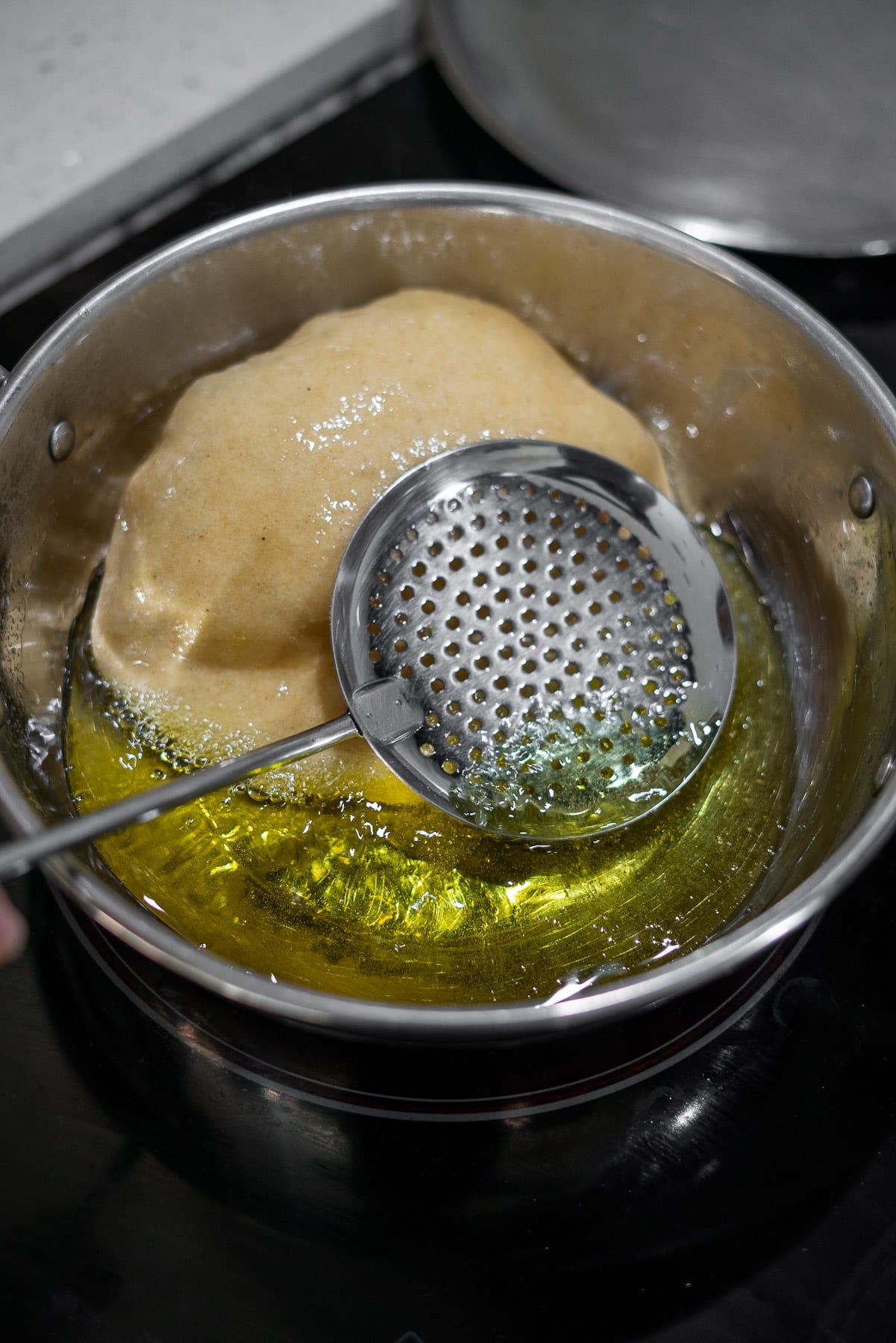
Carefully slip the bhatura in via the side of the pot. Use a slotted spoon to gently hold it under the oil for a few seconds, making small circles to ensure the length of the bhatura stays under the oil. It should slowly start to resist the slotted spoon and begin puffing up on one side.
Continue to gently press down on the side that hasn't quite puffed, so that the air is forced to spread in the bhatura.
Pro Tip: Notice how the oil is bubbling vigorously while this happens! It'll be ready to flip over to the other side when the bubbles are gentler and its golden brown.

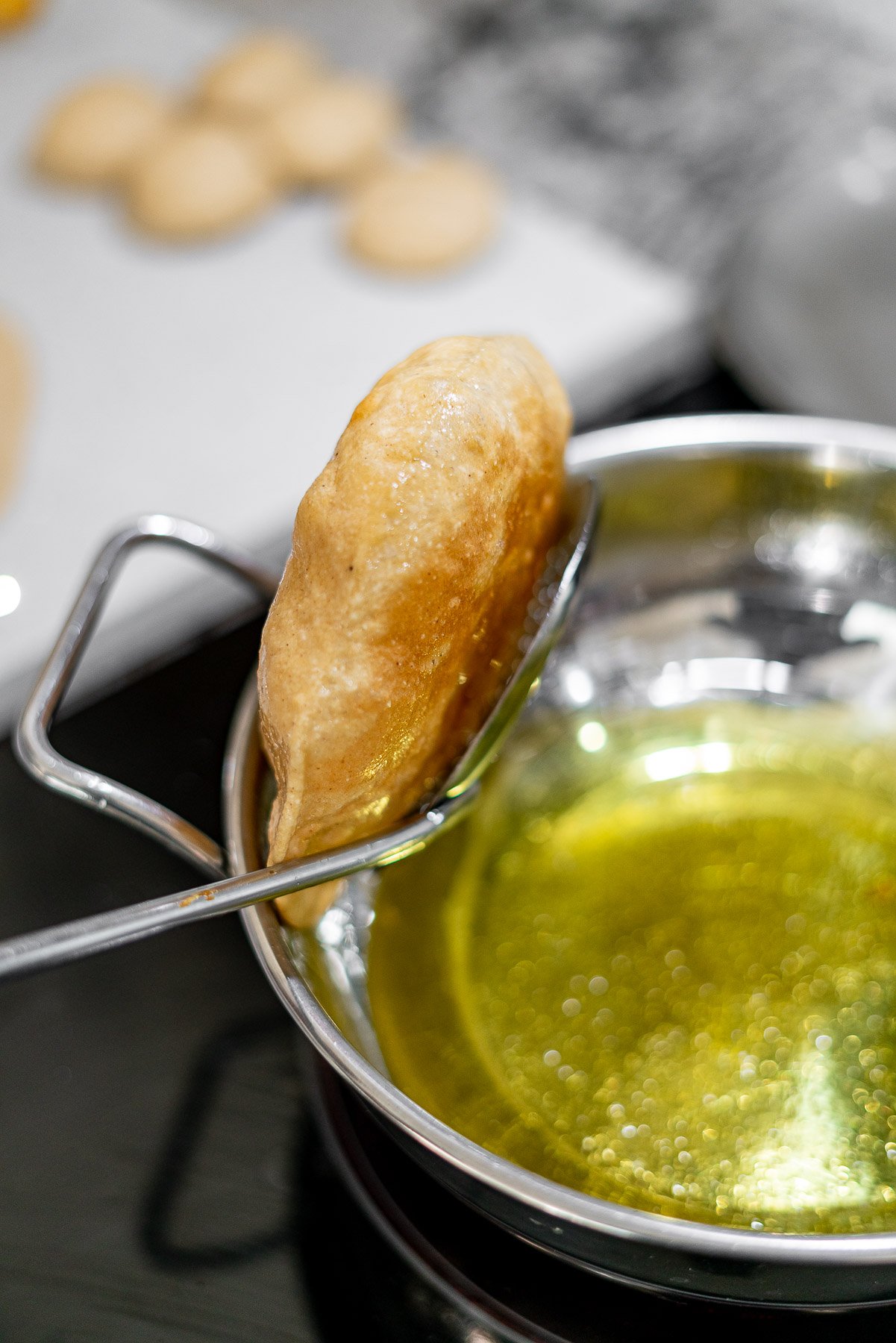
Flip the bhatura on to the other side. Continue to gently hold the bhatura down into the oil so the bottom half is completely submerged in the oil. Monitor the bubbles again to know when it's done and golden brown. Carefully remove the bhatura from the oil, holding it against the side of the pot to let the excess oil drip off.
Place it on the plate with a paper towel to drain off excess oil.
How to Serve
Ideally serve the bhature as soon as possible, but it should maintain the puffiness for a few minutes.
As soon as the bhatura is fried, it's common to pass it to the youngest person or hangry husband to begin eating first. It's commonly served with Chole, which is another recipe of my mother's! It's a vegan/vegetarian chickpeas curry and makes for a heavy meal when paired with bhatura. It'll also go great with Kala Chana Masala, or a black chickpea curry.
In terms of garnish and other accompaniments, raw red onion is basically mandatory in my household to eat with Chole Bhature. It's also great with achaar and chilis.
If you have leftover bhatura dough, I highly recommend using it for this fantastic No Yeast Pizza Dough.
Expert Tips Gathered over Decades
Making bhature is relatively straightforward but can easily become frustrating if they aren't puffing, are too crispy, or too thick. Here's a few tips I have accumulated after over a decade of being the designated fryer:
- Knead the dough until it is completely smooth. You can knead it by hand for 4-6 minutes, or in a stand mixer.
- Rest the dough for at least an hour to allow the dough to relax before rolling. If it's hard to roll, continue to let it rest until you can roll it into a thin oval.
- Wait until the oil is sufficiently hot before frying. If it's too low, the bhatura will soak up a lot of the oil. If it's too high, the bhatura will burn. The first bhatura is usually imperfect. I like to test a small amount of dough, and then wait another few minutes before I begin frying.
- I like to suffocate the bhature when I first place it in the oil, and hold it gently under the surface with a slotted spoon in small circular motions until it begins rising and puffing up.
- Fry one bhatura at a time. These are big boys and need their space.
- Use a pot that's wide enough to allow for flipping the bhatura while frying.
- Monitor the little bubbles that come out when frying. When there's only a small amount of bubbles, it's ready to flip to the other side.
Frequently Asked Questions
The difference is that puri are smaller in size and made with wheat flour, whereas bhature are larger ovals and made with all-purpose flour. Bhature also requires a leavening ingredient and curd whereas puri are made without any fermentation or leavening. They are both fried in oils and pair well with curries.
Bhature are deep fried so generally, no, they're not healthy. However, it is a well-rounded meal in terms of fat, protein, and carbs.
The curd in bhatura dough helps the dough rise when fried and gives it a soft texture.
Chole Bhature is popular across India and great for comfort food. It's a common breakfast food, though quite heavy due to frying. It's also eaten for lunch and dinner. So basically appropriate for every meal. It's a beloved street food in India as well.
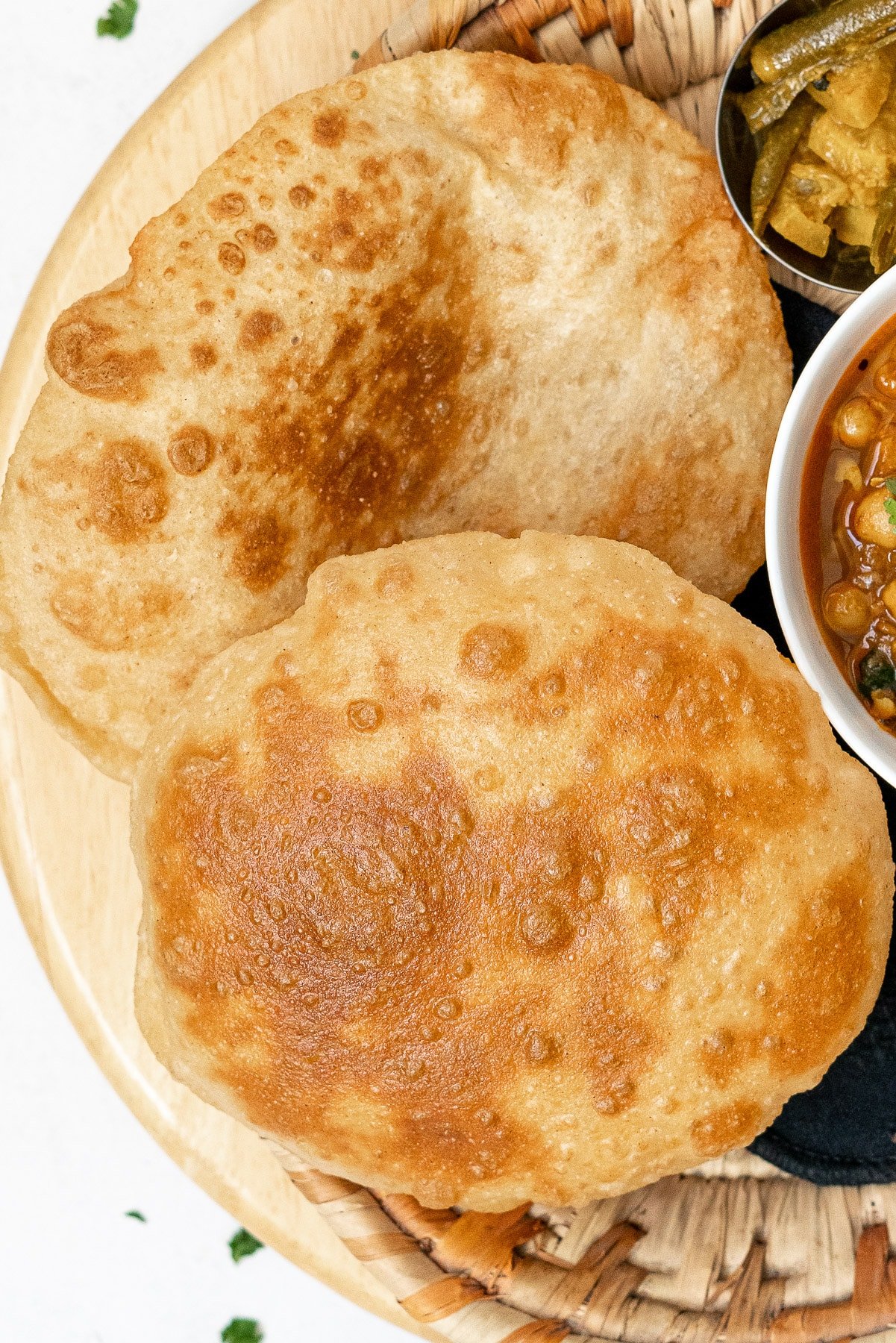
More Bread & Bun Recipes to try
Recipe
Want to Save This Recipe?
Thinking about making this recipe? Enter your email and I'll send it straight to your inbox to save for later. Plus, get new recipe inspiration from me every week!
By submitting this form, you consent to receive emails from Masala and Chai.

Bhature (Fried Bread)
Ingredients
- 1½ cups all purpose flour
- ¼ cup semolina
- ¼ teaspoon baking powder
- 2 tablespoon whole milk plain yogurt
- 2 teaspoon olive oil
- ½ teaspoon salt
- pinch of black pepper
- ½ cup lukewarm water
- 1½ cup neutral oil, for frying
Instructions
- Whisk together the all purpose flour, semolina, salt, black pepper, and baking powder in a mixing bowl.
- Add in the yogurt and olive oil and mix together with your hands until a shaggy dough forms. Slowly add in lukewarm water and knead until the dough is smooth, about 4-7 minutes. Cover and rest the dough for an hour.
- After resting the dough, prep a smooth surface with a tiny bit of olive oil. Transfer the dough to the surface and knead it for another two minutes.
- Measure out 8 equal sized balls. Roll each piece of dough into circles in between your hands.
- In a deep wok or dutch oven for frying, heat neutral oil for deep frying. It'll start to shimmer once it's hot and ready for frying.
- Work with one dough ball at a time. Roll the dough out using a rolling pin into an oval as large and thin as possible without tearing it.
- Carefully transfer the rolled out dough to the oil, slipping it in from the edge of the wok and into the oil. With a slotted spoon, gently hold the dough under the oil until it begins to puff. Fry until golden, about 1 minute total, and flip on the other side.
- Carefully transfer the dough to the oil, slipping it in from the edge of the pan. Gently push the bhatura under the oil again for about 10 seconds and then fry until golden brown, about a minute.
- Transfer the bhatura to a plate lined with paper towels to drain excess oil.
- Repeat with the rest of the rolled out bhature dough.
- Serve the bhatura immediately while it's hot.
Notes
- Rest the dough for at least an hour to allow the dough to relax before rolling. If it's hard to roll, continue to let it rest until you can roll it into a thin oval.
- Wait until the oil is sufficiently hot before frying. If it's too low, the bhatura will soak up a lot of the oil. If it's too high, the bhatura will burn.

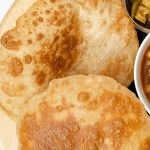
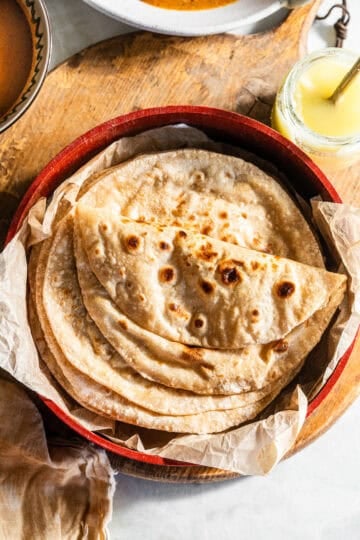

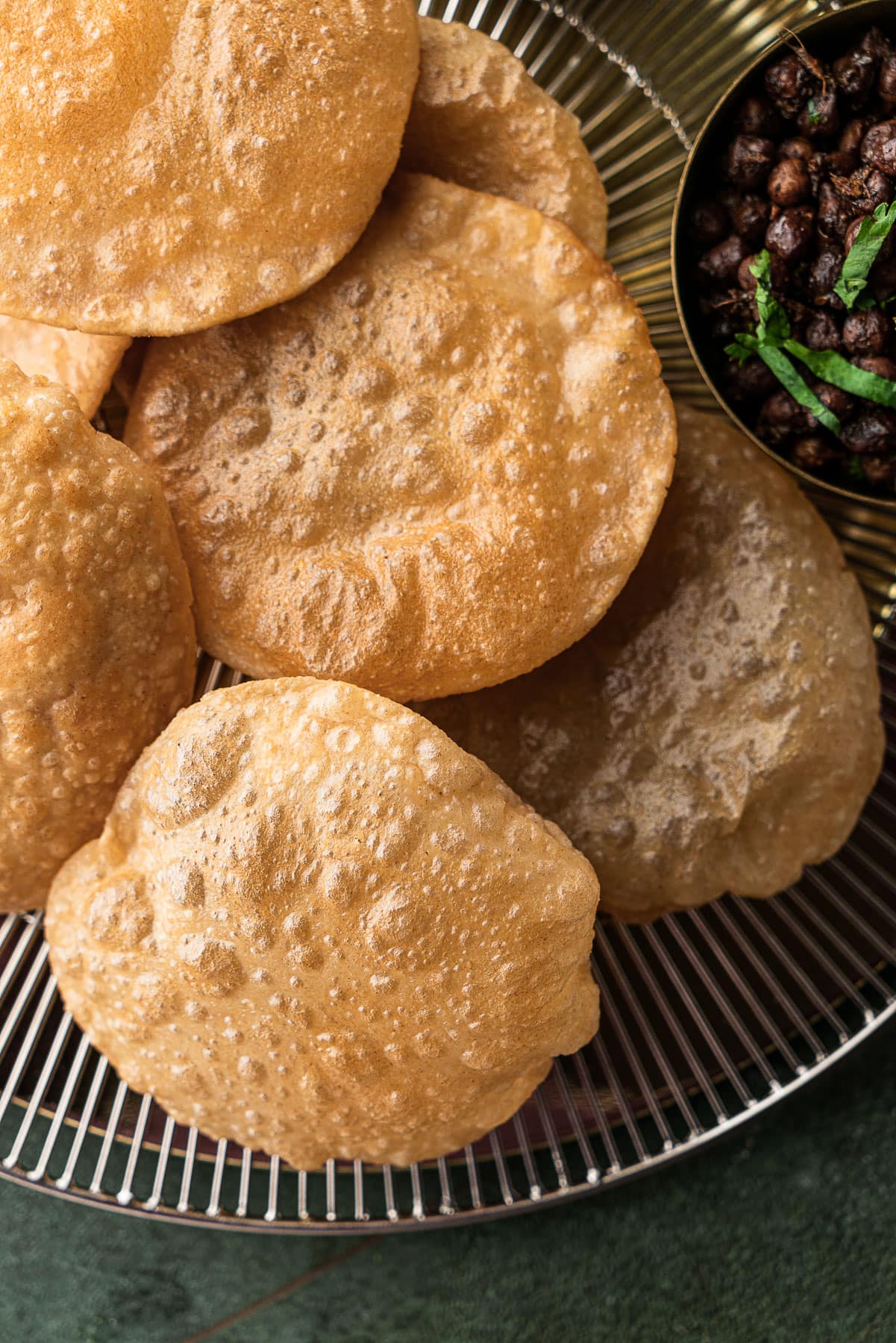

Leave a Reply